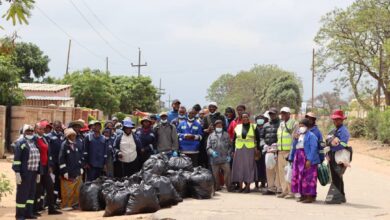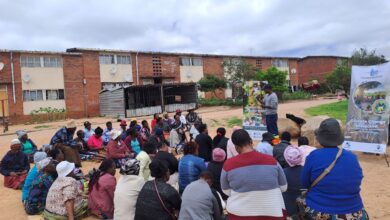Mawaba Primary leads charge for youth climate action in Zim

Jane Nkiwane
Chido Cleopatra Mpemba, the African Union’s Youth Envoy, joined forces with Zimbabwean students, Zimbabwe Youth Biodiversity Network and dignitaries at Mawaba Primary School in Lobengula, Bulawayo for a tree-planting ceremony. This impactful event, coinciding with the ongoing Youth Climate Change Symposium, underscored the importance of youth involvement in environmental action.
Over 300 students witnessed the planting of 15 fruit trees, a symbolic gesture that nurtured environmental awareness and instilled a sense of ownership in the school community. Lizwe Ncube, the School Development Committee Chairperson, hailed the initiative for its educational value. “We are glad that this program was hosted at Mawaba Primary School,” Ncube said. “It has provided our children with valuable lessons on the importance of tree planting, nature conservation, and understanding global warming.”

Theophilus Bethune, the school’s projects manager, further emphasized Mawaba’s commitment to environmental sustainability. He showcased the school’s existing green projects – an orchard, fish pond, and organic vegetable garden – that not only promote conservation but also generate income to support the school’s feeding program. Bethune explained how these methods help the school produce thriving vegetables even in scarce water conditions, thereby supporting both the school feeding program and generating income. “We need a new and better greenhouse and a solar-powered borehole to sustain our efforts,” Bethune said, emphasizing the impact of El Niño-induced drought on the school’s operations and budget.
Ameen Abdul, President of the African Youth Network of the Red Cross, echoed the need for collective action. “As the African Youth Network Red Cross Red Crescent Movement, we committed to planting 70% of 5 million trees by 2030. Our aim is to encourage local people to plant drought-resistant species like the cactus plant,” Abdul stated.
Deputy Director of Environmental Planning and Management, Norrah Mupaza, represented the government, reiterating their unwavering support for youth-led climate initiatives. “Climate change is a present reality impacting our economy and society. Zimbabwe, like many other African nations, faces erratic weather patterns, prolonged droughts, and severe storms. Gatherings like this symposium are incredibly significant,” Mupaza said. Mupaza praised the tree planting activity, noting that trees play an indispensable role in mitigating climate change by acting as carbon sinks, improving air quality, and supporting biodiversity. “The Honourable Minister confirmed the government’s full commitment to supporting youth-led initiatives and fostering an environment where young people can lead the charge in climate action,” she added.
The event at Mawaba Primary School stands as a testament to the power of youth engagement and the critical role they play in creating a sustainable future.





